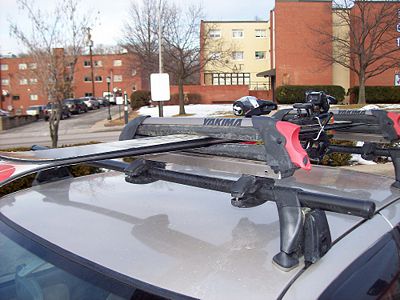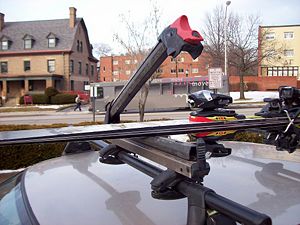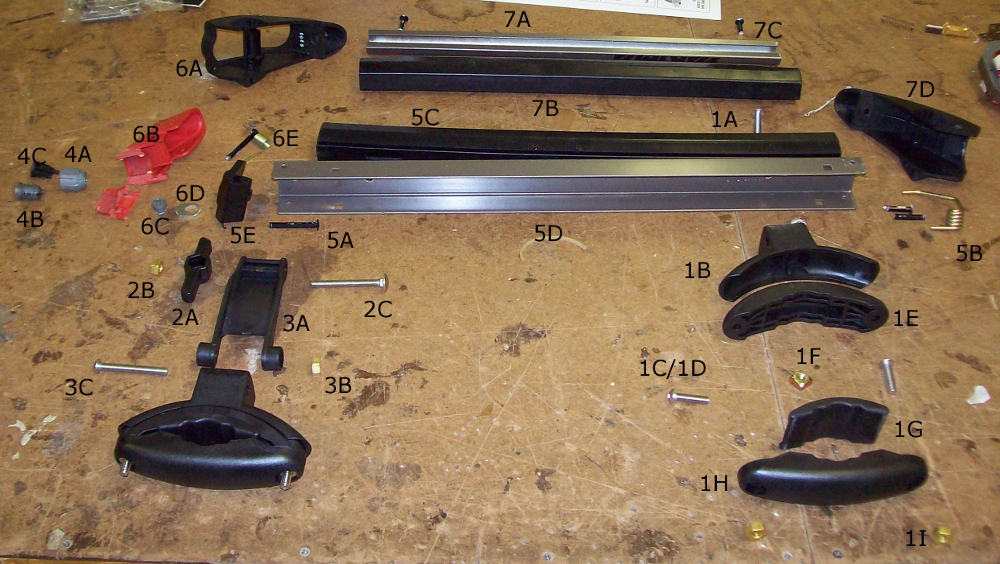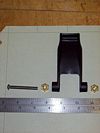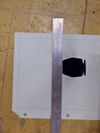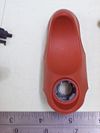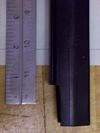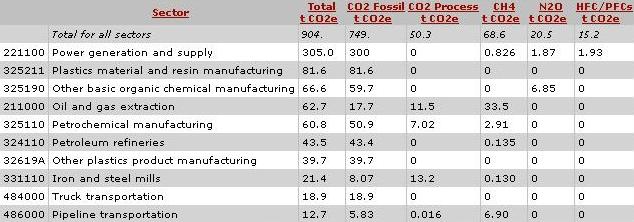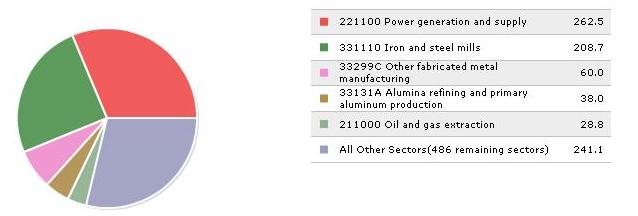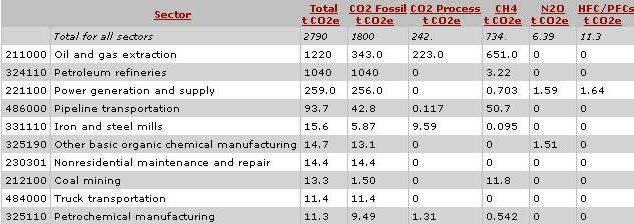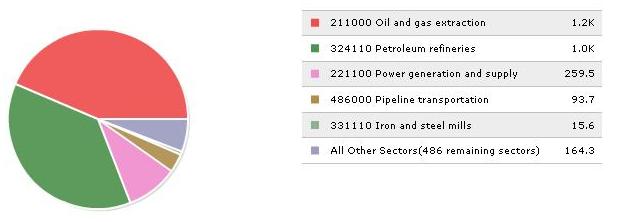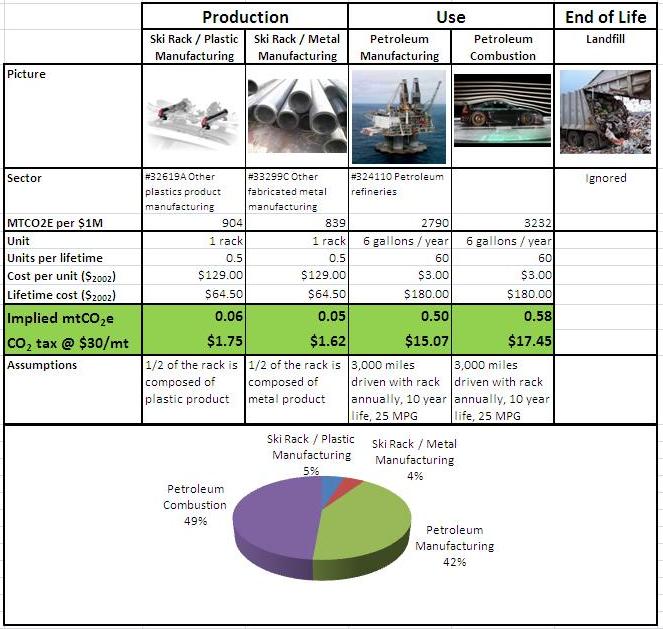Ski rack
From DDL Wiki
Contents |
Executive Summary
After an in-depth study on a Yakima PowderHound ski rack, we have concluded that there exists a serious need to address certain aspects of this product’s design.
The first usability study identified a serious deficiency in the product’s assembly and installation phases, especially concerning the installation of the rack onto the automobile roof. In many cases, including a real-world example, user installation proved inefficient, blind (i.e. the user could not see what he was manipulating on the product) and/or unsafe. These concerns are serious and were flagged as a priority for possible improvement and innovation.
Design for Manufacture and Assembly analysis showed that the manufacturing process itself is efficient enough to meet mass-production standards, utilizing common and easily workable materials in the construction of the product. However, we also noted a peculiar assembly trait that requires additional manipulation of the product during assembly. This particular problem, a hidden rivet, would require a full redesign of the subassembly in order to fix, but is not considered a priority against the other issues discovered.
Design for Environment analysis does not provide accurate modeling for the effects of after-market car parts, however the team was able to use first-hand experience as well as an estimation for the petroleum impact of the product, both during manufacture and over its lifetime. The team discovered that the greatest GHG impact of the ski rack is its detrimental effect on automobile fuel efficiency, totaling an estimated 5% (1-2 mpg) reduction on a standard sedan.
A study of Failure Modes and Effects implied consequences up to and including significant property damage, injury and loss of life, in the form of automobile accidents. The team also found that certain locking and moving mechanisms on the rack have a tendency to freeze, bringing into question the choice of materials and physical design of the entire kit. Both the security lock and the carrier-closing latch merit close study to prevent a possibly catastrophic failure of the product while in use.
Under these considerations, the team recommends a thorough redesign of the ski rack concept in order to address the issues listed above, as well as other concerns discovered over the first phase of product analysis.
Stakeholders
During the product usage study, the following stakeholders were identified with their respective needs.
| Stakeholder | Needs | Wants |
|---|---|---|
| Skier | Easy loading and unloading of skis Lack of pinch points Ski security Prevention of a frozen lock | Minimize road salt on the skis Large number of skis that can fit in the rack |
| Car owner | Easy access to doors, tailgate, sunroof Full visibility to the road Ski rack security | Minimize car damage Minimize fuel economy loss Minimize wind noise Easy removability |
| Shipping Company | Minimize weight Minimize size | Minimize packaging damage due to sharp parts |
| Retailer | Maximize revenue Minimize storage size Minimize floor space | Quality aesthetics Marketability |
| Installer | Ease of installation Minimize time to install | Use of common tools only |
| Other Drivers | Skis staying attached | |
| Garage Owner | Ski rack clears the garage |
Usage
User interaction with the ski rack is in three ways. The first way a user interacts with the rack is during installation of the ski rack onto a car roof rack. The second way a user interacts with the rack is made up of loading/unloading the rack with skis. The third interaction is driving a car with the rack on it.
Installation
Installing the rack is probably the hardest part of using the ski rack. In order to install the rack, the user must be able to access the roof of their vehicle. On the car we tested this on, it was rather simple as the car is quit low to the ground. However, on larger vehicles such as vans and SUVs, this can be an issue, and will make installing the rack much more difficult.
The first step in installation is to put the mounting brackets onto the ski rack. This is a fairly simple step as the rack is not yet on the car, and the rack can easily be manipulated. There is a bolt that has to go down through the bottom rubber compression pad and then screw into a nut that is captive in a sliding slot. Lining up the bolt and the nut is quite difficult and is rather frustrating. The process can be made much easier by removing the rubber pad that keeps the nut captive in the upper bail/slider assembly. This was not mentioned in the instructions and was not noticed until the product was dissected. This bolt should not be tightened the entire way at this point, as the mounting bracket slider assembly needs to be loose so it can slide during the mounting process.
Once the mounting brackets are attached to the rack, the bail screws need to be undone and the rack mounted on the car. This takes two people because you cannot hold the rack in place and tighten the bail screws at the same time. You have to tilt the rack all the way to one side to access one of the bail screws, and then all the way to the other side to access the other. Reaching half of the bail screws is very difficult because they are positioned towards the center of the car. They are impossible to reach without climbing on the car.
At this point, the bolt that connects the rack to the mounting bracket needs to be tightened. This is a very difficult as the rack is now on the roof of the car and the screws are blind. The user ends up fumbling around trying to fit a hexkey into a bolt that is recessed in a rubber pad. It took a few minutes to tighten these bolts a few turns each. Most of the time was spent simply trying to find the bolt with the hexkey.
Loading/Unloading Skis
To load or unload skis from the rack the user must first open the rack. To open the rack the rack must be unlocked (only if the rack is using the optional lock). If the rack is unlocked the rack is opened by pressing the latch release lever. The hinge spring will then open the ski rack.
Skis can then be loaded/unloaded from the rack. Depending on the height of the vehicle, this can be a difficult task. Skis/snowboards can be heavy and reaching up above your head to lift them from a roof rack can be awkward especially when the skis are towards the center of a vehicle.
For a demonstration of the loading process, you can view the following video: http://www.andrew.cmu.edu/user/jbizzak/ski_rack_loading_skis_video.avi
Driving
Driving with the roof rack is no different from driving with out one. The driver just needs to be mindful that their vehicle is now taller. This is especially important for taller vehicles, such as SUVs, when pulling into drive-throughs with overhangs. A minor annoyance is the sound the roof rack makes while driving. This particular roof rack whistles quite loudly above 40 mph. However, this is easily drowned out by turning up your car stereo.
Fuel economy is also effected while the roof rack is installed, so the driver will need to take note of this and plan stop for gas more often.
Bill of Materials
As shown below, there are 7 sub-assemblies consisting 30 unique parts on the Yakima Powderhound ski rack. Most of these parts are extruded or injection molded. The rack is primarily plastic, with steel crossbars, and rubber used throughout as padding and to provide a secure grip on the mounting bars and the skis. In addition, there are several standard parts including bolts, nuts, and rivets, which could be purchased at any hardware retailer.
Figure 2: Exploded view of Ski Rack assembly. NOTE: Only one assembly shown, full kit comprises two identical rack assemblies.
Table 1: Bill of Materials by sub-assembly
Mechanical Analysis
The Yakima Powderhound ski rack is designed to mount onto myriad crossbars. The mounting device is oval shaped, with a set of long and a set of short bolts to allow for mounting on a wide variety of shapes and sizes of crossbars. There is a rubber pad to hold the mounting bracket in place on the crossbars. The bottom crossbars are rigidly attached onto the mounts, while the top crossbars are hinged onto the bottom crossbars. The latch is designed to hold the crossbars securely in place, and release the crossbars to provide access to the skis at the push of the release. This is done through the use of a ratcheting clasp, to aid in the closing of the ski rack, and then the rocking of the release to disengage the ratchet to open the crossbars, providing access to the skis.
Our group did not perform a specific mechanical analysis for any part of the assembly due to the wide variation in possibilities and too many assumptions. A number of potential areas of failure that were identified from online user reviews, however. The first failure mode was the latch popping open and allowing the skis to fall from the rack, typically after the rack had been used for a number of years. A similar failure mode is complaints of the lock not opening or closing due to it freezing. The locks are not water-tight and rain, snow, or water spray gets into the lock and freezes, preventing the lock from functioning. This sometimes leads users to not locking their rack which combined with the first failure mode can be very dangerous. Skis falling off a car not only completely destroys your equipment, which could cost $1000 a pair, but is a hazard to other drivers. This could be prevented by creating water-tight locks and using a locking system that is not as susceptible to accidentally opening. The third failure mode we discovered was the rubber wearing down and cracking due to dry conditions and exposure to road salt. This problem could be fixed by considering different types of rubber or alternative materials.
Design for Manufacture and Assembly
In disassembling the ski rack into its constituent components, the team noticed that the ski rack utilized materials that are not only cheap to produce, but also used shaping and forming methods that are relatively efficient on a mass-production scale. The kit itself is comprised of two carriers, one for the front of the automobile and one for the back. By making the carrier bodies identical and thus interchangeable, the manufacturing costs drop significantly. The majority of components were of either formed steel or injection molded plastic, joined by standard rivets and screws. The only exceptions to this were the two springs in each latch assembly, which are made of brass, and the rack pads, which are molded rubber. All of these parts are easily manufactured on a large scale, leading the team to believe that the manufacturing process is as streamlined as possible for a universally-geared product.
All the corners are either rounded or made of soft material, and so do not pose a passive safety risk, while the top half of the carrier is heavy enough to engage the lock if left accidentally open, reducing the chance of equipment loss while the automobile is in motion. It should be noted that the spring located in the hinge (Part 5B) does not actually impart enough force on the assembly to lift the carrier, and instead assists the user when opening the carrier. The majority of parts can be fitted and assembled in a rational assembly-line fashion, without a large need to manipulate the assembly in mid-process. However, one rivet, which connects the top of the carrier assembly (Part 7B) to the hinge-side latch (Part 7F) must be installed after the top pad (Part 7C) is installed. The pad blocks access to the rivet joint, making a mid-process manipulation of the assembly required. The team noticed that the pad was slit at the contact area between the pad and the top (see photo), which folded the pad away enough to access the rivet joint, but this process is time-consuming and expensive on a mass-production scale, leading the team to believe this step eligible for possible innovation and improvement. Regarding user-end installation (i.e. installation onto an automobile), the team notes that the mounting bracket (Sub-Assembly 1) screws necessary for securing the bracket to the car are only accessible by moving the slider top (Part 1B) to the extremities of the upper bail (Part 1E). Because there are two screws, this means moving the slider top to the other side to access a screw. This process would also be done either blind (i.e. without a direct line of sigh to the joint location) or if the user were standing on top of the automobile. Both of these present a direct and significant barrier in terms of usability and safety, and are therefore areas of possible improvement.
Summary
For the majority of components and sub-assemblies, the ski rack is very much geared towards easy mass-production. As stated above, the parts are all made of relatively simple materials and shapes, and are interchangeable to some degree. In terms of assembly, however, there are certain aspects that are ripe for improvement. The first is the joint between the carrier top and hinge-side latch, which must be secured after it is covered by the rubber pad, and the actual assembly onto the automobile, which is inefficient, uncomfortable and possibly dangerous to the consumer. It is to these areas that we may consider applying efforts at improvement.
Failure Mode and Effects Analysis
In analyzing the Yakima PowderHound Ski Rack, we looked at failures with a high RPN as well as failures with a severity of 9 or higher, indicating that severe human injury could occur from the failure. The only identified way of severe human injury was from an undesired release of the ski rack while in transit. This could cause the skis to release at highway speeds possibly causing a fatal car crash. The failures identified to cause this failure were from the crossbars and the latch.
However, the severe failures of the crossbars are easily identifiable and preventable, thus yielding a low RPN value. However, all of the latch failures presented a mid to high RPN value, amplifying the concerns of the failure. The two failure methods that presented a high RPN and the possibility for severe human injury are the rack opening on its own and the user forgetting to close the rack. The unexpected opening can be addressed by changing the ratching device in the latch. Forgetting the close the rack could be addressed by making it more apparent from the drivers seat that the rack is still open, either by a visual aide or possibly an electronic alert.
The only failure method that did not present a risk for severe human injury was the latch failing to open on demand, caused either by a frozen lock or plastic deformation. The frozen lock is a common issue with all ski racks since the racks are used in the cold weather, and the moisture can freeze the metal in the lock, preventing it from unlocking. To prevent the plastic from deforming, the proper material and thickness should be used.
| Assembly | Function | Potential Mode of Failure | Potential Effect of Failure | Sev | Potential Cause of Failure | Occurance | Detection Controls | Detection | RPN |
|---|---|---|---|---|---|---|---|---|---|
| Bracket | Hold the rack onto the crossbars | Plastic Cracks | Rack Unstable | 5 | Cold | 2 | Material Choice | 1 | 10 |
| Bracket | Hold the rack onto the crossbars | Plastic Cracks | Rack Unstable | 5 | Poor Manufacturing | 4 | N/A | 6 | 120 |
| Bracket | Hold the rack onto the crossbars | Plastic Cracks | Rack Unstable | 5 | Vehicle Crash | 4 | N/A | 10 | 200 |
| Bracket | Hold the rack onto the crossbars | Plastic Cracks | Rack Unstable | 5 | Overtorque | 4 | Allen Key Size | 7 | 140 |
| Bracket | Hold the rack onto the crossbars | Bolt Shears | Rack Unstable | 5 | Vehicle Crash | 4 | N/A | 10 | 200 |
| Bracket | Hold the rack onto the crossbars | Bolt Shears | Rack Unstable | 5 | Rust | 7 | Use Stainless Steel | 5 | 175 |
| Bracket | Hold the rack onto the crossbars | Bolt Shears | Rack Unstable | 5 | User Bolt - Not Factory | 3 | Specific Shape and Thread | 10 | 150 |
| Bracket | Hold the rack onto the crossbars | Bolt Shears | Rack Unstable | 5 | Overtorque | 4 | Allen Key Size | 7 | 140 |
| Bracket | Hold the rack onto the crossbars | Bolt Shears | Rack Unstable | 5 | Undertorque | 3 | Allen Key Size | 7 | 105 |
| Bracket | Hold the rack onto the crossbars | Mounting Grooves Wear | Rack Unstable | 5 | Vibrations | 3 | Material Choice | 5 | 75 |
| Latch | Open and Close the Ski Rack on Request | Will Not Open | Cannot go skiing | 7 | Frozen | 5 | Material Choice | 8 | 280 |
| Latch | Open and Close the Ski Rack on Request | Will Not Open | Cannot go skiing | 7 | Deformation | 6 | Material Choice | 8 | 280 |
| Latch | Open and Close the Ski Rack on Request | Will Not Open | Cannot go skiing | 7 | Lost / Broken Key | 4 | Extra Key | 1 | 28 |
| Latch | Open and Close the Ski Rack on Request | Will Not Open | Cannot go skiing | 7 | Broken Rivet | 2 | Material Thickness | 6 | 84 |
| Latch | Open and Close the Ski Rack on Request | Will Not Close | Cannot go skiing | 7 | Broken Latch | 5 | Material Choice | 2 | 70 |
| Latch | Open and Close the Ski Rack on Request | Will Not Close | Cannot go skiing | 7 | Deformation | 6 | Material Choice | 4 | 168 |
| Latch | Open and Close the Ski Rack on Request | Will Not Close | Cannot go skiing | 7 | Lock Frozen Locked | 4 | Seal Lock to prevent moisture from entering | 4 | 112 |
| Latch | Open and Close the Ski Rack on Request | Will Not Close | Cannot go skiing | 7 | Broken / Worn Spring | 3 | Spring Choice | 5 | 105 |
| Latch | Open and Close the Ski Rack on Request | Will Not Close | Cannot go skiing | 7 | Broken Rivet | 2 | Material Choice | 6 | 84 |
| Latch | Open and Close the Ski Rack on Request | Opens on its own | Loss of Skis, Potentially Fatal Accidents | 9 | Deformation | 6 | Material Choice | 4 | 216 |
| Latch | Open and Close the Ski Rack on Request | Opens on its own | Loss of Skis, Potentially Fatal Accidents | 9 | Weakened Plastic | 7 | Material Choice | 6 | 378 |
| Latch | Open and Close the Ski Rack on Request | Opens on its own | Loss of Skis, Potentially Fatal Accidents | 9 | Driving Forces Break Latch | 3 | Minimize Forces, Material Choice | 10 | 270 |
| Latch | Open and Close the Ski Rack on Request | Opens on its own | Loss of Skis, Potentially Fatal Accidents | 9 | Ratchet Tooth Failure | 4 | Avoid Use of Ratchet Teeth | 8 | 288 |
| Latch | Open and Close the Ski Rack on Request | Opens on its own | Loss of Skis, Potentially Fatal Accidents | 9 | Broken / Worn Spring | 3 | Spring Choice | 5 | 135 |
| Latch | Open and Close the Ski Rack on Request | Opens on its own | Loss of Skis, Potentially Fatal Accidents | 9 | Broken Rivet | 2 | Material Thickness | 6 | 108 |
| Latch | Open and Close the Ski Rack on Request | Not Fully Closed | Chance of Opening leading to loss of skis, potentially fatal accidents | 9 | Ratchet Tooth Barely Engaged | 6 | Color Notification | 2 | 108 |
| Latch | Open and Close the Ski Rack on Request | Not Fully Closed | Chance of Opening leading to loss of skis, potentially fatal accidents | 9 | Debris in the Way | 8 | Color Notification | 2 | 144 |
| Latch | Open and Close the Ski Rack on Request | Not Fully Closed | Chance of Opening leading to loss of skis, potentially fatal accidents | 9 | Too much in the rack | 6 | Color Notification | 2 | 144 |
| Latch | Open and Close the Ski Rack on Request | User Forgets to Close | Loss of skis, potentially fatal accidents | 9 | Distracted User | 4 | Warning System | 6 | 216 |
| Latch | Open and Close the Ski Rack on Request | User Forgets to Close | Loss of skis, potentially fatal accidents | 9 | Cannot See Open Rack | 2 | Visual Aide | 7 | 126 |
| Crossbars | Holds the Skis Securely in Place | Does not hold the skis with sufficient force | Loss of skis, potentially fatal accidents | 9 | Different height of skis | 5 | Individually sliced rubber | 1 | 45 |
| Crossbars | Holds the Skis Securely in Place | Does not hold the skis with sufficient force | Loss of skis, potentially fatal accidents | 9 | Bent Crossbars | 2 | Material Choice | 1 | 18 |
| Crossbars | Holds the Skis Securely in Place | Does not hold the skis with sufficient force | Loss of skis, potentially fatal accidents | 9 | Unevenly worn rubber | 3 | Individually sliced rubber | 1 | 27 |
| Crossbars | Holds the Skis Securely in Place | Holds the skis too tightly | Damage to skis | 6 | Too thick of a ski | 4 | More space between crossbars, taller rubber | 1 | 24 |
| Crossbars | Holds the Skis Securely in Place | Holds the skis too tightly | Damage to skis | 6 | Bent Crossbars | 2 | Material Choice | 1 | 12 |
| Crossbars | Holds the Skis Securely in Place | Holds the skis too tightly | Damage to skis | 6 | Rubber too hard | 3 | Material Choice | 3 | 54 |
| Crossbars | Holds the Skis Securely in Place | Does not apply uniform pressure | Loss of skis, potentially fatal accidents | 9 | Different height of skis | 5 | Individually sliced rubber | 1 | 45 |
| Crossbars | Holds the Skis Securely in Place | Does not apply uniform pressure | Loss of skis, potentially fatal accidents | 9 | Bent crossbars | 2 | Material | 1 | 18 |
| Crossbars | Holds the Skis Securely in Place | Does not apply uniform pressure | Loss of skis, potentially fatal accidents | 9 | Unevenly worn rubber | 3 | Individually sliced rubber | 1 | 27 |
| Crossbars | Holds the Skis Securely in Place | Does not keep skis from sliding | Loss of skis, potentially fatal accidents | 9 | Not enough friction | 1 | Material choice | 1 | 9 |
| Crossbars | Holds the Skis Securely in Place | Does not keep skis from sliding | Loss of skis, potentially fatal accidents | 9 | Rubber too soft | 1 | Material choice | 3 | 27 |
| Crossbars | Holds the Skis Securely in Place | Improperly loaded | Loss of skis, potentially fatal accidents, Damage to rack | 9 | Attempt to load over the binding | 4 | Less space between crossbars | 2 | 72 |
| Crossbars | Holds the Skis Securely in Place | Improperly loaded | Loss of skis, potentially fatal accidents, Damage to rack | 9 | Attempt to load non-skis | 5 | Less space between crossbars | 4 | 180 |
| Inside hinge | Align the crossbars as it closes | Does not align properly | Rack will not close | 7 | Crossbars bent | 2 | Material choice | 1 | 14 |
| Inside hinge | Align the crossbars as it closes | Does not align properly | Rack will not close | 7 | Plastic | 6 | Material choice | 4 | 168 |
| Inside hinge | Align the crossbars as it closes | Does not align properly | Rack will not close | 7 | Rivet broken | 2 | Material thickness | 6 | 84 |
| Inside hinge | Align the crossbars as it closes | Does not fully open | Crossbars will not stay open | 3 | Customer cannot open it far enough | 4 | Create an easier way to open the rack | 2 | 24 |
| Inside hinge | Align the crossbars as it closes | Does not fully open | Crossbars will not stay open | 3 | Plastic deformed | 6 | Material choice | 4 | 72 |
| Inside hinge | Align the crossbars as it closes | Does not fully close | Cannot go skiing | 7 | Spring worn or broken | 3 | Spring choice | 5 | 105 |
| Inside hinge | Align the crossbars as it closes | Does not fully close | Cannot go skiing | 7 | Plastic | 6 | Material | 4 | 168 |
| Inside hinge | Align the crossbars as it closes | Does not hold the top and bottom crossbars together | Cannot go skiing | 7 | Rivet broken | 2 | Material thickness | 6 | 84 |
| Inside hinge | Align the crossbars as it closes | Does not hold the top and bottom crossbars together | Cannot go skiing | 7 | Broken plastic | 4 | Material choice | 1 | 28 |
| Riser | Increase clearance | Binding still does not clear roof | Vehicle gets scratched and dented | 3 | Not enough of a lift in design | 1 | Better design | 1 | 3 |
| Riser | Increase clearance | Mount does not attach properly | Cannot go skiing | 7 | Rivet breaks | 2 | Material thickness | 6 | 84 |
| Riser | Increase clearance | Mount does not attach properly | Cannot go skiing | 7 | Plastic breaks | 4 | Material choice | 1 | 28 |
Design for Environment (DFE)
Design for Environment is an increasingly important aspect of the design process for most in today's developed countries. Taking a "green" attitude is part of staying competitive in today's society, which is concerned about global climate change due to our impact on the environment. To assess the impact our product has on the environment, we used a type of Life Cycle Assessment (LCA), the Economic Input-Output Life Cycle Assessment (EIOLCA), developed at Carnegie Mellon. The EIOLCA uses a number of business sectors to estimate the product's impact on the environment through a value for greenhouse gas emissions. The EIOLCA tool also can assess the economic activity, toxic releases, energy, and water use throughout the various sectors. For our analysis, we only considered the greenhouse gas emissions. The numbers used in the EIOLCA are in US 2002 dollars, so the current emissions per $1 million is likely less, due to the fact that prices have increased due to inflation.
Production Stage
After searching all the available sectors, we could not find a sector that encompassed ski or roof racks, let alone a good sector for automobile accessories. As a result, we split the analysis of the production of the roof rack between manufacturing sectors for plastic and metal. Choosing the sector based on the best description, we went with the "Other plastics product manufacturing" and "Other fabricated metal manufacturing" sectors.
When $1 million is spent in the "Other plastics product manufacturing" sector, 904 metric tons of CO2 (TCO2E) are emitted. The emissions within this sector are largely due to power generation, gas extraction, and the manufacturing of the plastic itself. The table and graph below show the individual contributions to the overall GHG emissions from the sector.
When $1 million is spent in the "Other fabricated metal manufacturing" sector, greenhouse gas emissions rise by 839 metric tons of CO2 (TCO2E). The emissions within this sector are largely due to power generation, iron and steel mills, metal and petroleum refinement, and fabrication. The table and graph below show the individual contributions to the overall GHG emissions from the sector.
Use Stage
The effect on the environment during the use stage comes through decreased fuel economy for vehicles with roof racks installed. A 5% decrease in fuel economy (Fuel Economy, 2011) is average for automobiles with a roof rack installed over the same automobile that does not have a roof rack installed. Using this figure, with a conservative estimate of ~25 MPG per car and an average of 3,000 miles driven with a roof rack installed per year (average of 12,000 miles annually, rack installed for 3 of the 12 months), gives 6 additional gallons of gasoline used annually. We also assumed that the the rack will be used for 10 years before being retired by the user to either be recycled or disposed of in a landfill. The table and graph below show the GHG emissions due to the refinement of petroleum.
The combustion process (in the engine of the car) will also be a significant contributor to the overall GHG emissions. According to the EPA, on average, a gallon of gas, during combustion, will lead to 8.8 kg of CO2. This number can be converted to 3232 metric tons of CO2 equivalent per $1 million of product, using simple math. This number was also figured in the use stage of the product.
End of Life
The end of life effects have been ignored for this assignment. This is due to the fact that the CO2 emissions from disposing in a landfill are negligible when compared to the environmental effects during the production and use stages. The Powderhound will likely be disposed of in landfill, since the parts will be worn from consistent wear and damaged form exposure to road salt. Furthermore, the integration of many plastic and metal parts would make it difficult to disassemble to recycle the separate parts appropriately.
EIOLCA Summary
The table and graph above demonstrate what our group thought intuitively - that the use cycle has a far greater contribution to the life cycle GHG emissions than the production stage does. Specifically, 91% of the emissions result from the use stage, while only 9% result from the production stage. If congress were to pass a tax on CO2, the cost of production would not be significantly impacted. The total CO2 tax, estimated by plastic and metal manufacturing processes, would be low - $3.37, or ~2.6% of the total price ($129.00) of the rack. For the use stage, however, the addition of a C02 tax would significantly impact the price of gas, ultimately raising the price of gas by 15-20% at the pump.
DFE Conclusions
For the most part, Yakima followed guidelines and made good choices when it came to choosing materials for the rack. Also, they appeared to minimize materials where they good. Minimizing materials leads to a decrease in the environmental impact and Yakima succeeded at doing this, except in a few small areas (extra plastic on some parts, rack too long for 3 skis, too short for 4, etc.)
Yakima has left room for improvement, however, and we, as a competitor can take advantage of this. The biggest area for improvement is reducing the air drag the rack creates to reduce the fuel mileage decrease. We could accomplish this in many ways - reducing the profile of the rack, streamlining the rack so that air flows over the rack, making the rack re-movable so that when not in use it can be stored in the car.
Team Member Roles
Jeff Bizzak - FMEA, Stakeholders
Chris Bondoc - DFMA, Team Leader
Wil Hamilton - BoM, Usage
Ben Streeter - DFE, Mechanical Analysis
References
"Economic Input-Output Life Cycle Assessment - Carnegie Mellon University." Economic Input-Output Life Cycle Assessment - Carnegie Mellon University. N.p., n.d. Web. 4 Feb. 2011. <http://www.eiolca.net/>.
"Emission Facts: Greenhouse Gas Emissions from a Typical Passenger Vehicle | US EPA." US Environmental Protection Agency. N.p., n.d. Web. 5 Feb. 2011. <http://www.epa.gov/oms/climate/420f05004.htm#step1>.
"Gas Mileage Tips." Fuel Economy. N.p., n.d. Web. 5 Feb. 2011. <http://www.fueleconomy.gov/feg/planning.shtml>.
"Petroleum Refinement." Chang Qing. N.p., n.d. Web. 5 Feb. 2011. <www.cqmamerica.com/product/pic.jpg>.
"Rogan Corp." Plastic Manufacturing. N.p., n.d. Web. 5 Feb. 2011. <rogancorp.net/images/manufacturingfloor1.jpg>.
"Yakima Powderhound Rack." Car Racs Lewis Solutions, Inc.. N.p., n.d. Web. 5 Feb. 2011. <http://www.carracs.com/files/3675926/uploaded/yakima_big_powderhound_ski_snowboard.jpg>.
